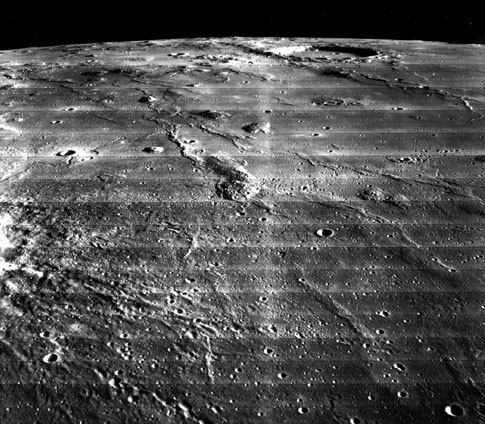Volcanic Hills in the Ocean of Storms

Credit: Lunar Orbiter II-M213
Explanation:
The Moon is the only object in the universe where we can compare kilometer scale details from telescope views with evocative orbital oblique perspectives. From Earthly telescopes we see a field of hills and bumps west of the crater Marius. Such an overhead shot is complemented by this wonderful Lunar Orbiter II image which looks NNE from over the eastern ejecta of the crater Reiner (far left central). The 41 km wide Marius is near the limb. According to shadow length measures by Dick Pike the crater is 1.5 km deep and its rim rises 600 meters above the surrounding Oceanus Procellarum. Marius is older than the nearby mare, and mare lavas have flooded its floor - thus both its rim height and crater depth are less than what they originally were. But the real topic of interest here is the great collection of rough surfaced domes and cones called the Marius Hills. 262 domes and 59 cones have been mapped, and a number of the domes are visible in this image. Marius Hills domes are rougher, more irregular in outline and lack central pits, compared to classic domes such as the one near Kies. The Marius domes and cones are older than the surrounding mare, which from crater counts are 3.3 b.y. and 2.5 b.y. old. Lavas from the various volcanic vents, including the 20 sinuous rilles visible on Orbiter images, built up a plateau more than 120 m higher, and in places 1 km higher, than nearby maria. We still do not understand why the Marius Hills area was such a huge eruption site.
—
Chuck Wood
Related Links:
Heather, Dunkin and Wilson (2003) Volcanism on the Marius Hills Plateau: Observational analysis Using Clementine Multispectral Data. Journal of Geophysical Research 108, E3, 5017, doi:10.1029/2002JE001938, 2003.
Kunar Orbiter IV View
